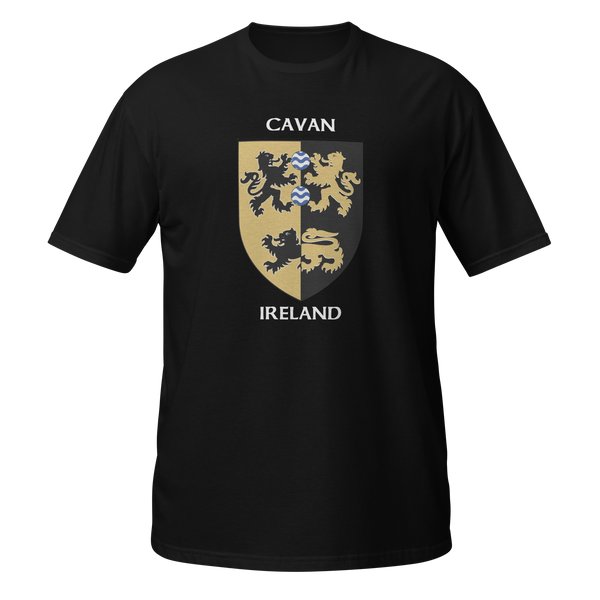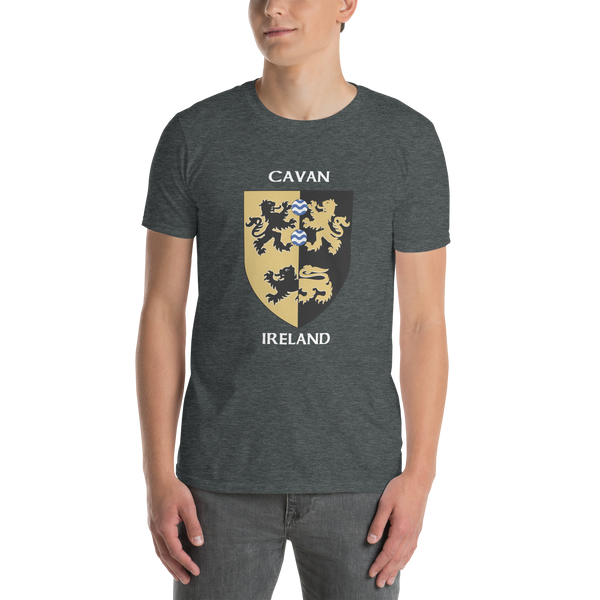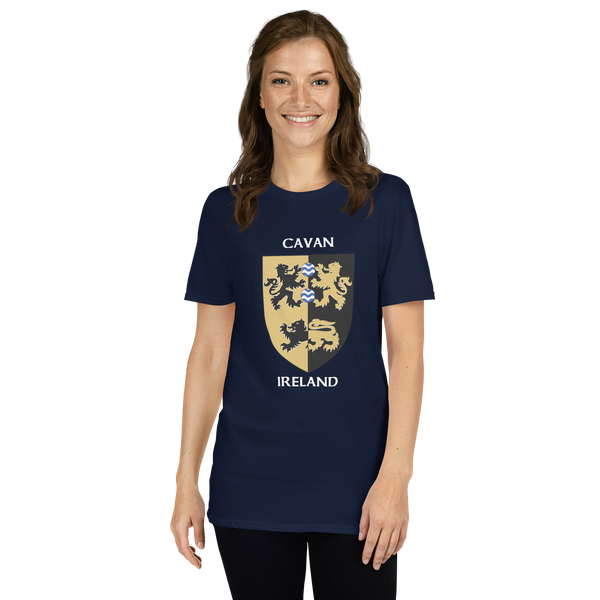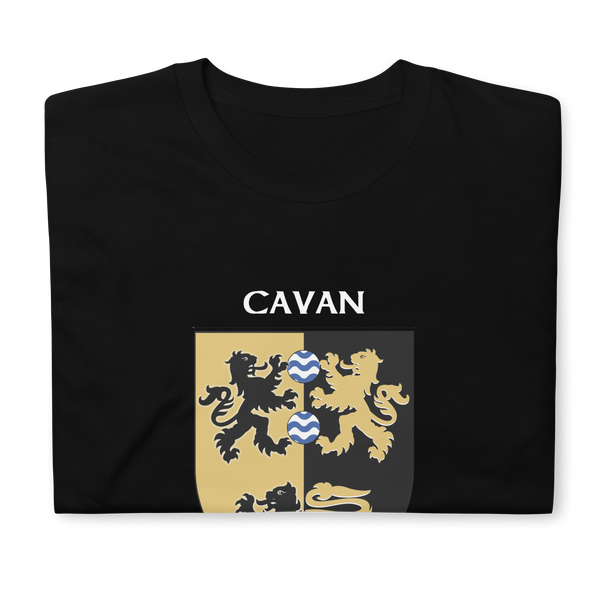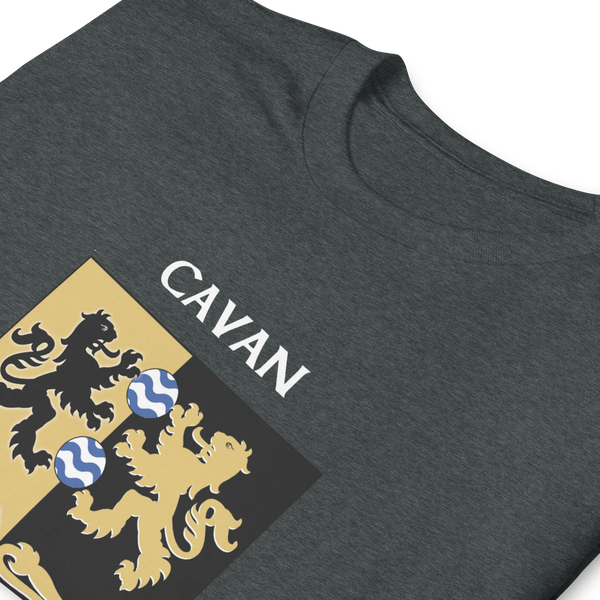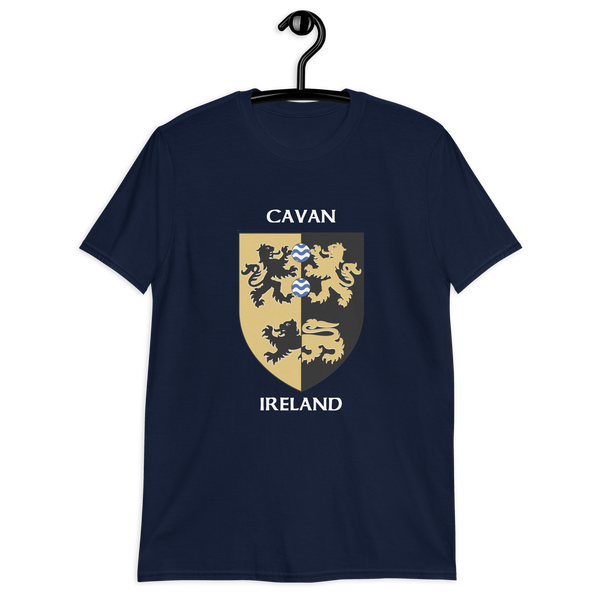Cavan Ireland Coat of Arms Short-Sleeve Unisex T-Shirt
Up Cavan! Show your county pride with our exclusive Ogham Art short-sleeve t-shirt design featuring the County Cavan coat of arms. Available in black, navy and heather gray in sizes S, M, L, XL, 2X and 3X.
- 100% ring-spun cotton
- Heather gray is 90% ring-spun cotton, 10% polyester
- 4.5 oz/yd² (153 g/m²)
- Shoulder-to-shoulder taping
- Quarter-turned to avoid crease down the center
Click here for our Cavan coffee mug.
Click here for our Cavan bumper sticker.
U.S delivery only with FREE shipping! Printed on demand so please expect 1-2 weeks for delivery.
Here is a brief summary of the Ogham alphabet. Stay tuned for more detailed posts in the days to come. Sign up below for the Ogham Art Newsletter to receive email notifications about new postings, blogs, products and events.
Sláinte,
Colleen & Chris
Ogham is the earliest written form of Primitive Irish, the oldest of the Gaelic languages. Ogham was first used in Ireland and parts of England, Scotland and Wales between the 2nd and 6th centuries. Though its actual origins remain a mystery today, it is believed the Celts desired a cryptic alphabet that could not be deciphered by Roman Britain.
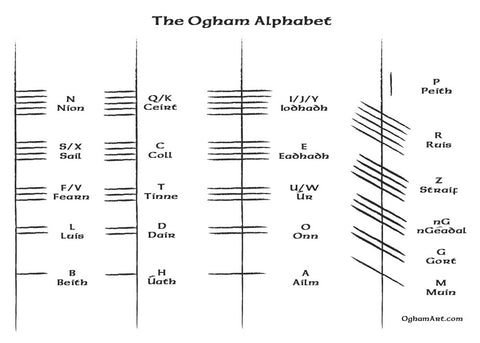

Represented as a series of perpendicular and intersecting lines, this ancient script is thought to be influenced by the Latin alphabet using 20 characters. It is most commonly written vertically and is read from bottom to top. When presented horizontally, it is read from left to right.







